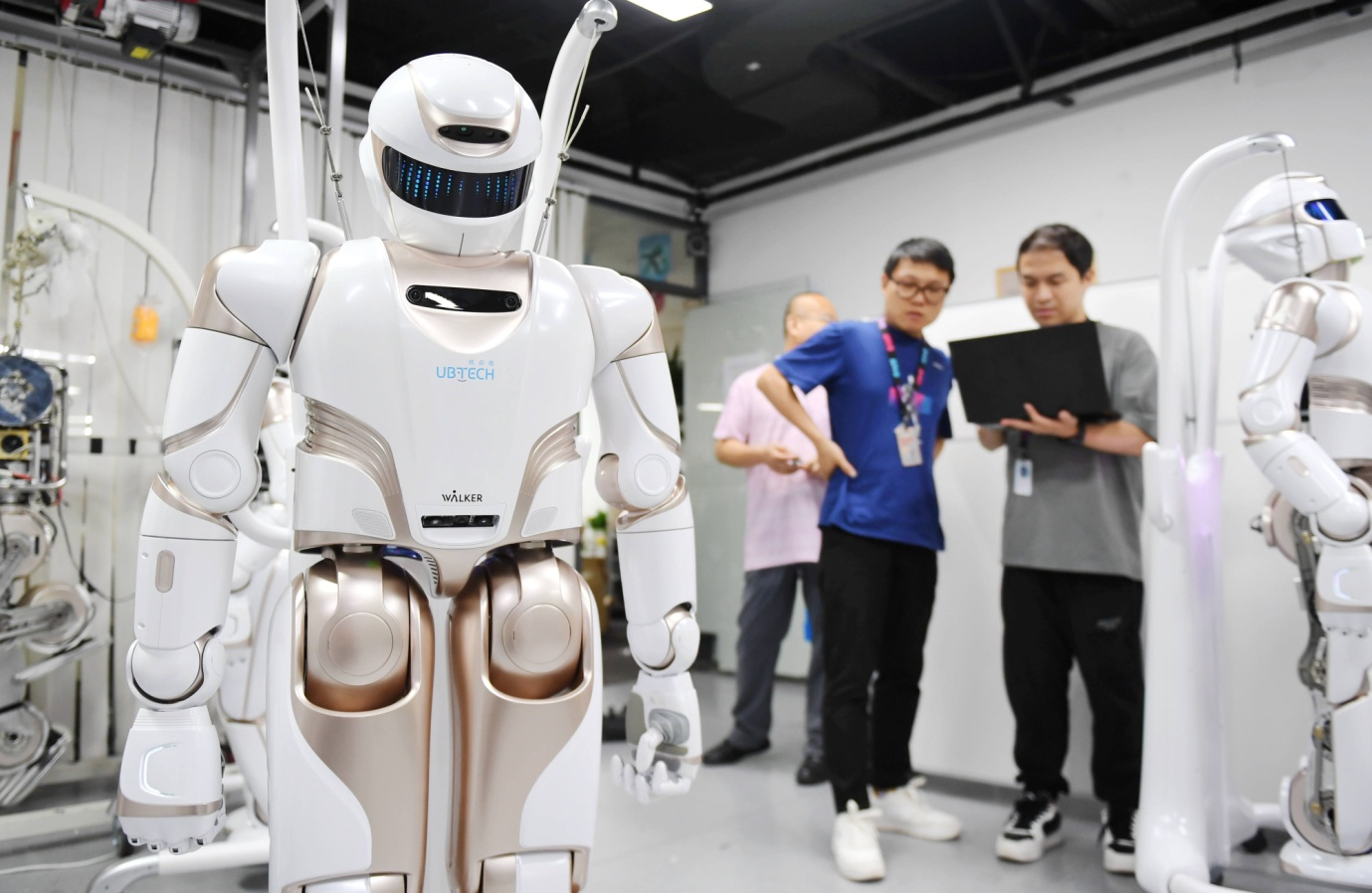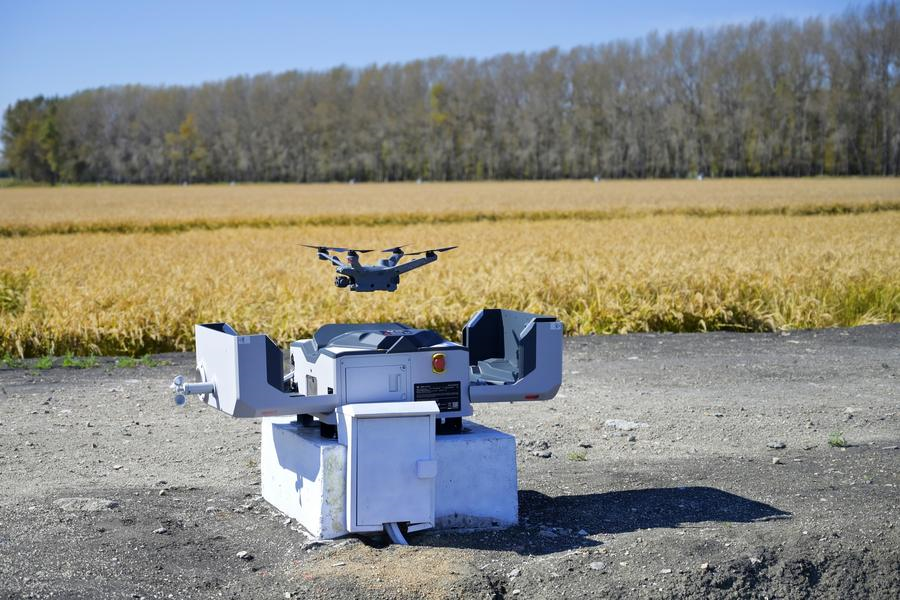Rise of AI Technology: New Quality Productive forces Inject Momentum into Chinese Economy

Researchers test android "Walker X" at a science company in Shenzhen, Guangdong province, in June 2024. [Photo/Xinhua]
In a matter of a few days, DeepSeek, since the launch of its latest artificial intelligence (AI) model has swiftly transitioned from being a little-known Chinese startup to a global success, distinguishing itself in the AI world. Released on January 20, 2025 DeepSeek R1, an open-source AI model built by Chinese firm DeepSeek at the fraction of the cost of U.S. AI models quickly soared to the top of Apple app store’s free charts, surpassing Open AI’s ChatGPT. The dramatic turn of events sent shockwaves through Silicon Valley and the financial markets reacted accordingly, as tech stocks plummeted with Nvidia posting a record one-day loss for any company on Wall Street. In fact, DeepSeek’s breakthrough has not only disrupted the AI industry with its R1 open-source model which makes advanced AI technology more accessible, but also offers a unique approach to AI development, prioritizing cost-effectiveness, transparency and performance.
Given AI represents a driver of productivity and economic growth, DeepSeek’s recent success, which signals the rise of China’s AI adoption, further unlocks new growth opportunities for high-quality development across industry and society. Over the last decade, China has strived to build a solid foundation to support its AI economy, and intensified actions to upgrade traditional sectors of the economy and foster emerging industries by leveraging AI technology. During this period, the Chinese government issued a slew of policies including the AI Security Governance Framework (2024) and the ‘‘Next Generation Artificial Intelligence Development Plan’’ launched in 2017, which sets ambitious goals, seeking to establish AI technology as a key driver of economic transformation by 2025 and position China as the global hub for AI innovation by 2030. Benefitting from policies, which aim to spur innovation and technological development while tackling emerging risks, China’s AI economy has witnessed significant progress, with AI increasingly becoming an indispensable driving force for a new round of technological revolution and industrial transformation.
According to the Ministry of Industry and Information Technology, at present China is home to more than 4, 400 AI firms, with the total scale of its core AI industry scale valued at 500 billion yuan (about US$70 billion). Efforts to integrate AI into China’s primary, secondary and tertiary industries has unlocked new growth drivers, helping to cultivate new quality productive forces, thus, advanced productivity freed from the traditional economic growth mode and productivity development paths. In the case of Chinese manufacturing industry ranked first globally in terms of overall scale for the last 15 years, an essential pillar of the world economy, AI adoption is transforming all aspects of manufacturing, driving efficiency, sustainability, and profitability. With the manufacturing industry hamstrung by various challenges linked to production and operations, efforts to integrate smart technologies such as AI helps Chinese manufacturers to optimize processes, predict maintenance needs, and improve product quality, contributing to reducing manufacturing costs and harmful emissions.
In recent years, application of cutting-edge technologies such as AI has been a game changer for the manufacturing industry, facilitating the rapid adoption of smart manufacturing. According to a Deloitte Survey on AI adoption in manufacturing, China’s performance in AI adoption is outstanding, with the market size of AI in the manufacturing sector expected to exceed US$2 billion this year, posting average annual growth of over 40 percent from 2019. Similarly, in the agriculture sector, AI adoption which integrates smart technologies including machine learning, drone applications and remote sensing for comprehensive farm management have enabled farmers to leverage AI’s transformative force to redefine traditional farming practices, promoting sustainable farming practices, reducing environmental impact, and boosting profitability.
Thanks to these essential benefits, efforts to integrate smart technologies into the agriculture value chain continues to gain traction, creating new employment opportunities in the sector, particularly in AI machine learning, software development, and data science. Compared to a few decades ago, agriculture has become attractive to young people in China with smart farming opening up new career paths in the sector such as automation engineers, data analysts, agricultural technology consultants, and precision agriculture specialists, infusing new possibilities into agriculture development and rural revitalization. To further accelerate the digital transformation of the entire agricultural industry chain, China in October last year issued the National Smart Agriculture Action Plan (2024-2028). According to the plan, China will leverage advanced technologies including AI, the Internet of Things (IoT), and big data to improve efficiency, boost productivity and promote sustainable practices across the agriculture sector.

A drone returns automatically after an intelligent field patrol mission at an agricultural experiment station in Shuangyashan City, northeast China’s Heilongjiang Province, Sept. 28, 2024. (Photo/Xinhua)
Given agriculture is linked to all sectors of the Chinese economy – with the sector providing raw materials for processing industries, and influencing the services sector via activities like transportation and finance, and also serving as a major source of employment and food security. Ultimately, enhanced efforts to drive digital transformation of the entire agriculture value chain, now and into the future will unlock new opportunities to nurture new quality productive forces across various industries, fuelling innovation, and fostering high-tech industries and viable economic models that leverage smart technologies like AI to spur high-quality growth and development. By 2030 China aims to expand its core AI industry to more than 1 trillion yuan (US$140 billion) and to boost related industries to over 10 trillion yuan (US$1 trillion) during the same period. As China makes progress towards high-impact AI transformation, there are daunting challenges that hamstrung the AI economy that if addressed will unlock additional transformative growth. Fortunately, DeekSeek’s latest breakthrough AI model shows how to tackle some of these major challenges, – thus the DeepSeek R1 prioritizing cost-effectiveness, transparency and performance. Ultimately, if participants of China’s AI economy could find ways to build a more collaborative ecosystem that focuses on AI development characterised by transparency, cost-effectiveness and performance, then China will certainly unlock the full potential of the AI economy to achieve high-quality development.
About the author: Alexander Ayertey Odonkor is the founder and leading expert at the Ghana Centre for China Studies, Africa’s preeminent and most comprehensive platform exclusively dedicated to authoritative interpretation of China’s domestic and foreign policies.
Production credits: This commentary is produced by the Ghana Centre for China Studies, and published in a joint collaboration with the China Internet Information Center. The article is republished by China Focus.
At the Ghana Centre for China Studies we eschew specific policy positions. All positions and opinions expressed in this publication are solely those of the author (s).